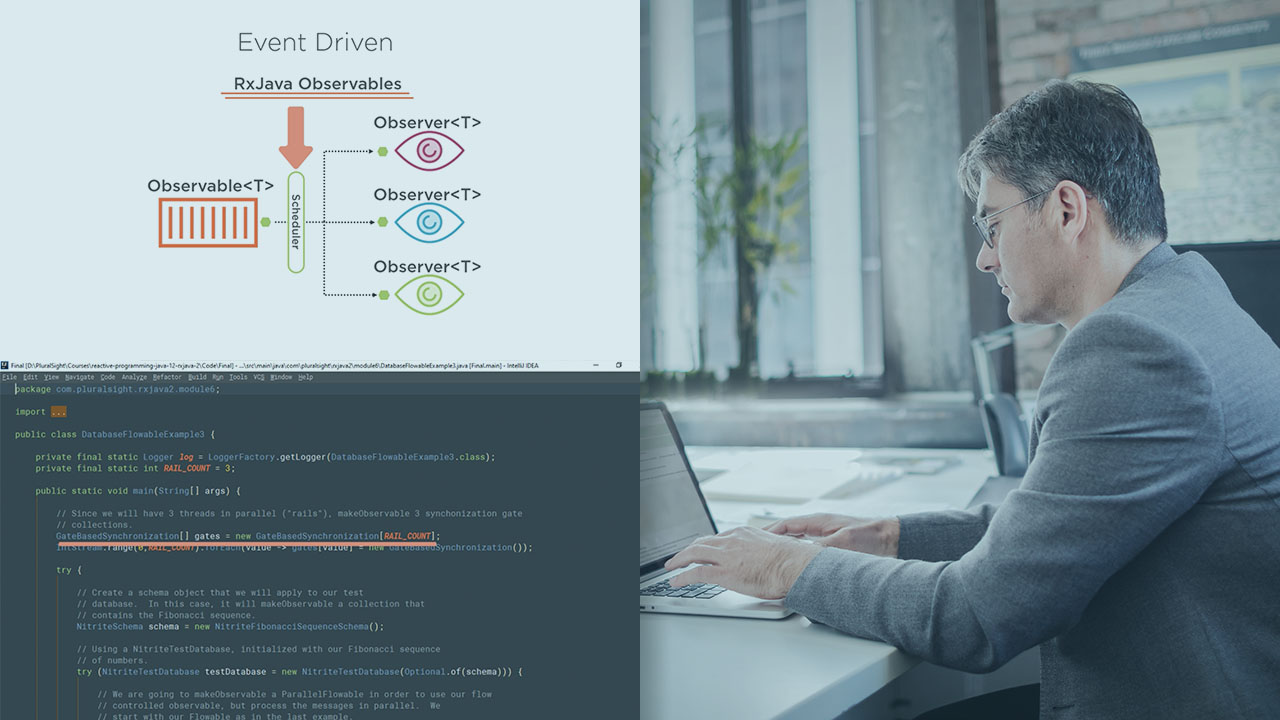- Course
Reactive Programming in Java 12 with RxJava 2
In this course you will learn to use the RxJava Version 2 library to accomplish the goals of the Reactive Manifesto, the software industries standard for Reactive Programming.

- Course
Reactive Programming in Java 12 with RxJava 2
In this course you will learn to use the RxJava Version 2 library to accomplish the goals of the Reactive Manifesto, the software industries standard for Reactive Programming.
Get started today
Access this course and other top-rated tech content with one of our business plans.
Try this course for free
Access this course and other top-rated tech content with one of our individual plans.
This course is included in the libraries shown below:
- Core Tech
What you'll learn
Due to heat limitations, modern computer systems have been unable to increase CPU clock speeds in order to increase chip performance. Instead, chip designers have begun to scale performance using an increasing number of on-chip processor cores.
In this course, Reactive Programming in Java 12 with RxJava 2, you will gain the ability to implement Reactive Programming techniques in order to more fully utilize a modern computer's multi-core CPU.
First, you will learn The Reactive Manifesto, the software industries de facto standard for Reactive Programming. Next, you will discover how the RxJava library can be leveraged to tame the difficult task of implementing asynchronous applications. Finally, you will explore how to apply Reactive Programming to modern day problems like network and database access.
When you’re finished with this course, you will have the skills and knowledge of Reactive Programming and the RxJava library needed to implement applications and services that exhibit the quality standard laid out in the Reactive Manifesto.
Reactive Programming in Java 12 with RxJava 2
-
Version Check | 15s
-
Module Overview | 34s
-
The Reactive Manifesto | 2m 5s
-
Event Driven Applications | 34s
-
The Observer Pattern | 1m 12s
-
Composing Observables | 3m 17s
-
Improved Performance with Concurrency | 1m 16s
-
Improved Performance with Concurrency, Part 2 | 1m 11s
-
Resilient Applications | 2m 4s
-
Responsive Applications | 2m 31s
-
Observable Events and Cardinality | 2m 41s
-
Demo: Observable Creation and Events | 3m 14s
-
Demo: Observable Cardinality | 3m 44s
-
Observable Lifecycle and Error Handling | 3m 30s
-
Demo: Observable Lifecycle | 1m 58s
-
Demo: Observable Error Handling | 1m 34s
-
Demo: Unsubscribing from an Observable | 1m 59s
-
Backpressure and Flowables | 2m 34s
-
Demo: Backpressure and Flowables | 5m 15s

